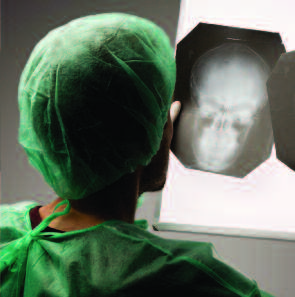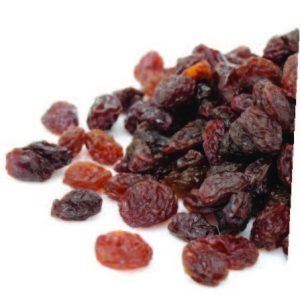News, views and insights on maintaining a healthy edge.
 Bariatric Surgery: A “Miracle Moment”
Bariatric Surgery: A “Miracle Moment”
A recent study of diet and nutrition disorders looked at attitudes of the morbidly obese toward obesity and obesity treatment. Researchers found that the majority of study subjects thought of obesity as an unalterable hereditary trait. Although they recognized that personal eating behavior contributes to and exacerbates their condition, they feel that altering this behavior is difficult to change or control. The same study also showed that food is often used as a coping strategy, which makes following a healthier diet plan a “huge sacrifice.” The findings support the idea that, for the morbidly obese, bariatric surgery represents a “miracle moment” that will change their lives without requiring an active role or participation. Researchers concluded that it is important to empower patients before and after bariatric surgery, and to promote a new awareness of the weight-loss process.
 Heads Up On Facial Fractures
Heads Up On Facial Fractures
With all the publicity about the long-term damage associated with concussions, the medical community has become hyper-vigilant when it comes to the diagnosis and treatment of major head injuries. A new study out of Victoria Hospital in Canada suggests that doctors may be overlooking one type of injury—facial fractures. Patients suffering this type of injury show evidence of minor brain injury. Unlike a typical concussion, where the brain is “sloshed” by heavy force, facial fractures appear to injure the brain because impact forces are transmitted through the head. The same dynamic can also cause neck problems. The study, conducted by craniofacial surgeons, showed that facial fractures cause major brain injury 29% of the time—but in the remaining 71% of cases, more than half showed evidence of minor brain injury, which can easily go unnoticed and untreated.
 Crazy Time for Cannabis
Crazy Time for Cannabis
On the heels of news that marijuana use has been legalized in Washington State, recent research has added to the growing amount of data that suggests that heavy cannabis exposure during adolescence increases the future risk of developing schizophrenia. In addition, legalization for medical use elsewhere in the country exposes an entirely new group of users to pot, many of whom may have other types of psychosis risks. Many healthcare professionals and scientists are now urging for a test that might help predict the risk for developing cannabis psychosis—something that doctors, for instance, could administer before prescribing marijuana to a patient. Genetic researchers at the King’s College London’s Institute of Psychiatry recently carried out a case control study to investigate variation in the AKT1 gene and cannabis use in increasing the risk of psychosis. AKT1 is involved in dopamine signaling, which is known to be abnormal in psychosis. The study found that cannabis users who carry a particular variant in the AKT1 gene have a two-fold increased probability of a psychotic disorder; this increases up to seven-fold if they smoked or ingested marijuana daily. The results are not conclusive in and of themselves that AKT1 is the key to a genetic test, but according to Dr. John Krystal, Editor of Biological Psychiatry, it “does show that this source of psychosis risk has a genetic underpinning.”
 Link Between Sleep Disorders and Cancer Deaths
Link Between Sleep Disorders and Cancer Deaths
Sleep apnea sufferers have one more bit of bad news to add to their growing list. A study conducted in 2012 suggest that sleep-disorder breathing is associated with an increased risk of cancer mortality. This on top of increased risk of hypertension, cardiovascular disease and depression. Patients with severe sleep apnea had an incidence of cancer deaths five times higher than those without serious sleep-disorder breathing. “We are a long way from proving that sleep apnea causes cancer or contributes to its growth,” says Dr. F. Javier Nieto of the Wisconsin School of Medicine and Public Health—the lead scientist on the study and a sleep epidemiology expert. “But animal studies have shown that the intermittent hypoxia [an inadequate supply of oxygen] that characterizes sleep apnea promotes angiogenesis-increased vascular growth-and tumor growth. Our results suggest that SDB is also associated with an increased risk of cancer mortality in humans.”
 Environmental Factors Trigger Allergies in Newborns
Environmental Factors Trigger Allergies in Newborns
The idea that smoking while pregnant—or significant exposure to second-hand smoke—can trigger any number of problems in a newborn is widely accepted. In the case of allergies, now we know why. Two Iranian scientists from the Helmholtz Centre for Environmental Research recently released findings that show smoking affects the development of peripheral allergy-relevant stem cells in the blood. Their report, published in Clinical & Experimental Allergy, shows that one-year-olds with skin problems, such as dermatitis or cradle cap, had elevated levels of eosinophil progenitors in their blood. This establishes a relationship between the genetic predisposition for a disease and environmental influences. The conclusion the scientists drew is that, just because allergies run in a family, it doesn’t mean a child will suffer from those same allergies. The stem-cell findings prove that environmental and lifestyle factors actually determine whether a genetic predisposition is in fact realized or not.
 Holiday Baking: Shoulda Woulda Coulda
Holiday Baking: Shoulda Woulda Coulda
Don’t you love it when you hear how unhealthy holiday eating can be? Hopefully, your guilt has worn off and you’ve dropped an unwanted pound or two. But just in case, Utah State University has some tips for healthier baking. 1) Lower fat content by using plain yogurt instead of shortening or butter. 2) Replace icing with sifted confectioner’s sugar. 3) Add fiber to recipes by using a 50-50 mix of hard white wheat flour with regular flour. 4) Cut the amount of salt called for in baking by a third or half—it’s important from a taste and chemistry standpoint, so you can’t leave it out entirely. 5) Cut the sugar in recipes by 25%—you’ll barely notice the difference. Don’t think of these tips as “too little, too late.” Think of them as a recipe for success in 2013, and implement one every other month. By next December, you will be happier, healthier and guilt-free when the baked goods start rolling out of your oven.
 New Findings on Gluten-Free Foods
New Findings on Gluten-Free Foods
Back in December, the good folks at Guinness added a new entry in their Book of World Records: the largest gluten-free pizza. It covered more than a third of an acre and weighed more that 50,000 pounds. Given the recent proliferation of gluten-free foods on supermarket shelves, some have questioned whether there is actually a need for this type of product, or whether it’s just some new dietary fad. After all, fewer than 1% of people in the U.S. suffer from Celiac Disease, an autoimmune disorder of the small intestine triggered by exposure to gliadin, a protein found in wheat. So is wheat sensitivity among non-Celiac individuals real or imagined? A recent study published in the American Journal of Gastroenterology confirms what many in the field long suspected: non-Celiac wheat sensitivity not only exists as a distinct clinical condition, it shows up in people who already exhibit food hypersensitivity, as well as those who do not. “These findings are very important, and I hope to see more research in this area,” says Dr. Samiappan Muthusamy of the Center for Digestive Diseases. “For our patients with non-Celaic sprue gluten sensitivity disorder, we suggest they continue a gluten-free diet.”
 Raisin D’Etre
Raisin D’Etre
New data presented at the last American College of Cardiology scientific session suggest that a handful of raisins (not an apple) a day could keep the doctor away for those with mildly increased blood pressure or hypertension. Raisins contain a high amount of potassium—which is known to lower blood pressure—and are a good source of antioxidants, which have been shown to have a good effect on blood vessels. The study may lead to more ambitious trials on the positive impact of raisins on blood pressure. Until then, researchers suggest consuming 60 a day (about a handful). P.S. If you have a dog, please no sharing; vets haven’t figured out exactly why yet, but raisins (and grapes) appear to be toxic to canines.





